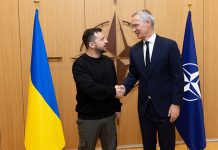“The world feels more complex, precarious, and dangerous than it has for some time.” – General Sir Patrick Sanders, Chief of the General Staff, reflects on CHACR’s Conference and the importance of assembling internationally-recognised experts to help the Army better understand the strategic context in which it operates, and the thematic issues likely to impact the world in 2024.
Read the digital document above or continuing reading below.
I was sorry that I couldn’t be at this year’s CHACR Conference at the Royal Military Academy Sandhurst on 7th December, but was delighted to hear that so many were in attendance, not least our allies and partners from all over the world. Thank you for your time and continued friendship.
I’d also like to thank the panellists. Their expertise really brought the conference to life, and we are grateful for their time.
The conference came at a point when we have a land war in Europe and now a tragic, brutal, and very perilous conflagration in the Middle East, with all the attendant risks of escalation. The world feels more complex, precarious, and dangerous than it has for some time.
If I may borrow from Keir Giles, ‘Polycrisis’ is the new normal, and having the resilience to deal with multiple crises simultaneously is an essential skill for modern armies.
As with all things, understanding is the first step.
It is no coincidence that the CHACR Conference occurs in December. It seeks, through panels of internationally recognised experts, to help the Army better understand the strategic context in which we operate, and the thematic issues likely to impact the world in 2024. But having heard from the panellists, let me offer my thoughts on four key contextual adjustments since last year’s conference.
Firstly, the concepts of strategic autonomy and non-alignment feel increasingly close to bankruptcy.
Alliances and partnerships founded on shared values can confer genuine strategic and operational depth, especially when underwritten by shared capability with all the attendant sharing of research and development, supply chains and workforce. The shape of these emerging blocks is yet to be determined. However, Finnish – and soon, Swedish – accession to NATO represents the most dramatic regional security alignment in Europe since the end of the Cold War, and I’m thrilled that the CHACR is hosting a conference to mark the 75th anniversary of NATO next year.
Secondly, in an increasingly realist world order, hard land power matters. Who knew? The power of economic sanctions and soft power can be beguiling, but their shortcomings have been laid bare by both the pace of Russian recapitalisation, despite unprecedented sanctions, and the persistent threat posed by Iran and Hamas. Whether through denial or punishment, deterrence must be credible. We should also be clear eyed that hard power is predominantly applied to the land, not always from the land, but almost exclusively to the land. Armies matter, even to a maritime nation.
The current geopolitical context is being shaped in Gaza by the application of land power to a parcel of land the size of the Isle of Wight because that is where humans live, and where human affairs are settled.
Thirdly, the pace and scale of wars in Ukraine and Gaza are unprecedented in the 21st century, characterised by a mixture of continuity and change. On the same battlefield we are witnessing AI-enabled kill chains triggered by GPS hardened first-person view drones alongside trench warfare and artillery barrages more akin to World War One. And let’s remember, warfare is a human endeavour, one that is always visceral, always violent, and reliant on the will of soldiers.
Whilst disruptive technology will affect how we conduct the orchestra of war, it will not change war fundamentally. AI and emergent technology just change the route to three enduring fundamental requirements – integration, good people who are experts in their domain, and partners.
Fourthly, the tyranny of concurrency. I have already mentioned the requirement for modern armies to deal with multiple competing global crises. The events of this year have challenged our planning assumptions and risked exposing the scar tissue of prolonged disinvestment in defence and the Army in particular.
At the RUSI 2022 Land Warfare Conference, I talked of a 1937 moment. In light of Russia’s mobilisation of a war economy, currently dedicating 36 per cent of GDP on rearming, her implacable, and we must assume, enduring hostility towards the West and Eastern Europe, the very real risks of a wider conflict in the Middle East, and the chronic risk of Chinese territorial aggression – that judgement is one I stand by.
But we have responded, and will continue to do so through Op Mobilise, through our world leading support to Ukraine, and our modernisation which includes our offer to NATO.
Furthermore, we are clear about our purpose to fight and win wars on land. It sounds obvious but this is not where we were, and this clarity is driving a single-minded focus throughout the army on warfighting. It is the single most important change we have made.
We also know what we intend to become: the most modern and lethal army in Europe, a leader in the Joint Expeditionary Force, and the British Army that NATO needs, designed to warfight, and which is expert at operating globally.
Events such as CHACR’s conference help shape our future decisions and have supported the production of the Land Operating Concept, the capstone conceptual benchmark for the British Army. It is the most robustly evidenced and inclusive piece of conceptual thinking that the Army has produced in more than three decades and places the British Army at the intellectual edge of land warfare.
So let me finish where I started. With thanks. The CHACR continues to help sustain, develop and promote the Army’s intellectual edge, and helps ensure that the British Army can out-think as well as out-fight our adversaries now, and into the future.
General Sir Patrick Sanders, Chief of the General Staff





